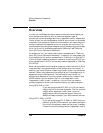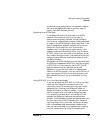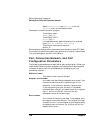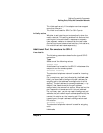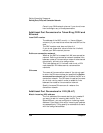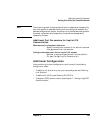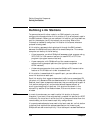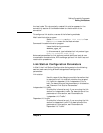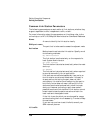
150 Chapter 5
Defining Connectivity Components
Defining Ports, DLCs, and Connection Networks
Select a value that describes the role of the local node
for link stations defined on this port. In SDLC
communication, one end manages the link and is called
the primary link station. The other end is the
secondary link station.
Use one of the following values for this field:
Secondary
The other end of the link is to be the controller and the
remote system is configured to be primary. This is
nearly always the case if you are configuring a link to a
host system.
Primary
This port is to act as the SDLC controller of the link,
and the remote system is configured to be secondary.
Negotiable
For maximum flexibility, this setting enables the two
ends to negotiate which end performs the primary role.
Choose this value if you do not know which role is
configured for the remote system.
You can use this setting for a peer link, but be aware
that negotiating the role causes a short delay when the
link is activated.
Primary Multi-drop
The link is leased and this port is to act as controller of
a multi-drop link to several secondary nodes.
Use this setting when you want to configure several
link stations from the local node to different remote
nodes (for example, for links to downstream nodes).
Each of these other nodes must be configured as
secondary, and you must be using a leased line.
Secondary Multi-PU
The local port is one of the secondary stations on a
multi-drop link controlled by the port on the remote
system.
If you configure a port for a switched incoming or
leased line, you also need to configure the following
items:
Encoding





